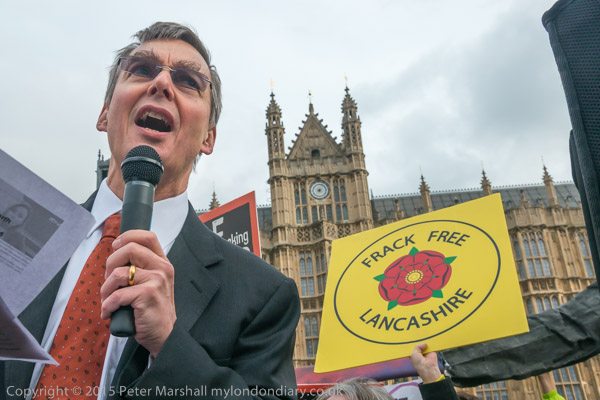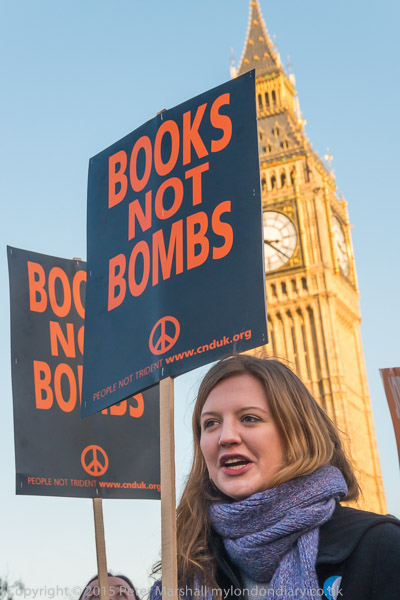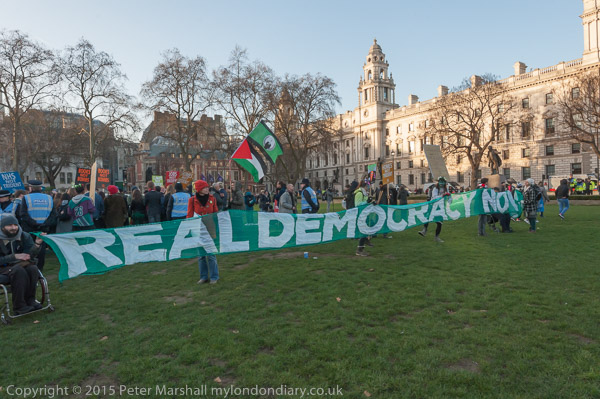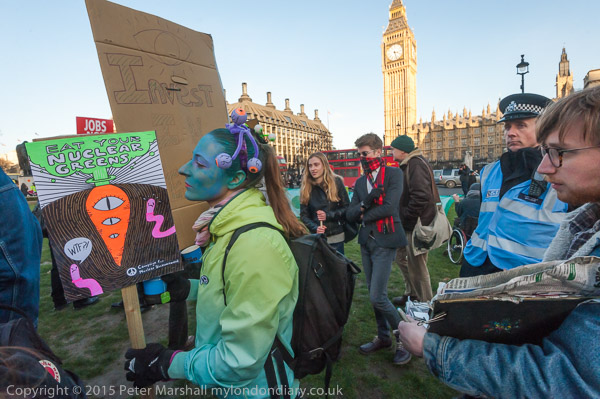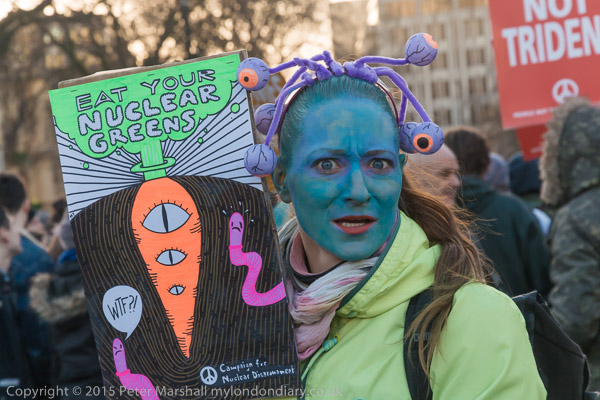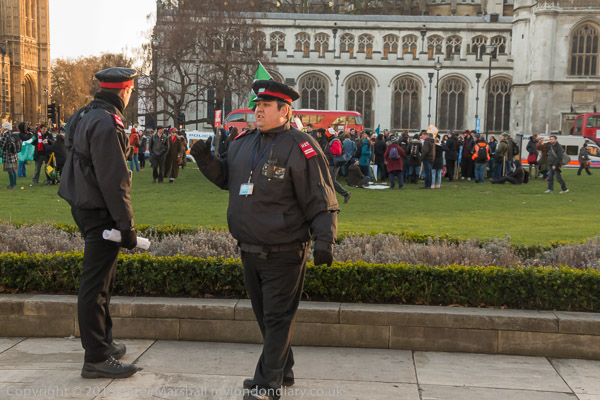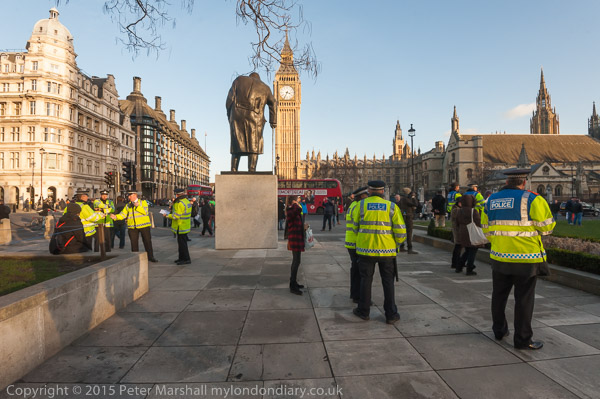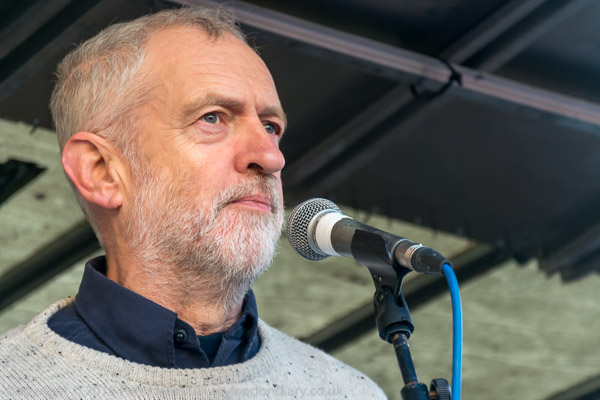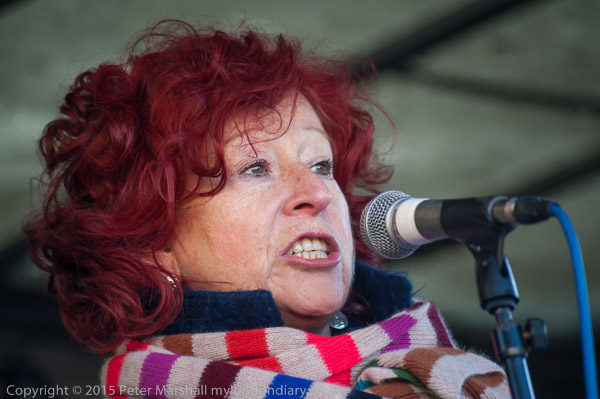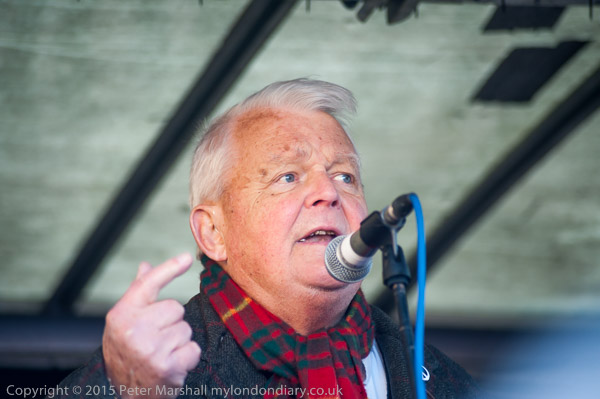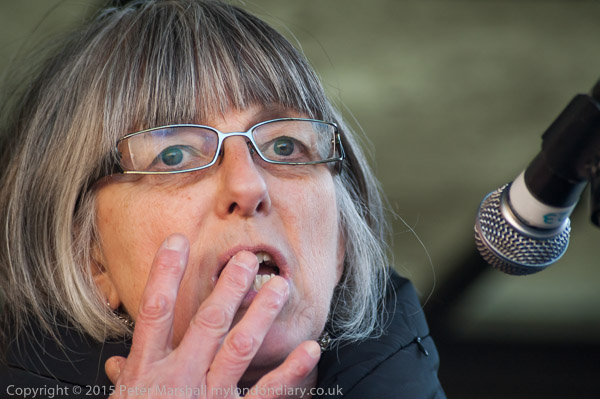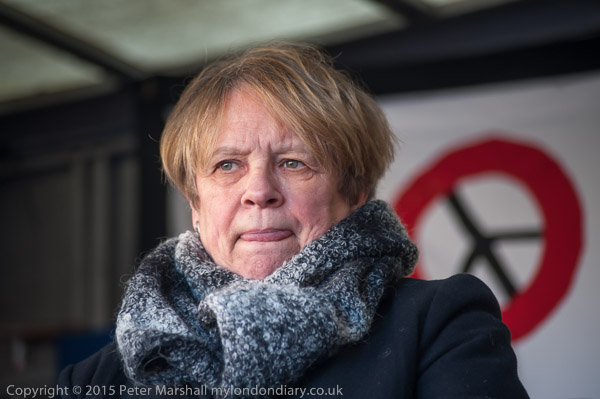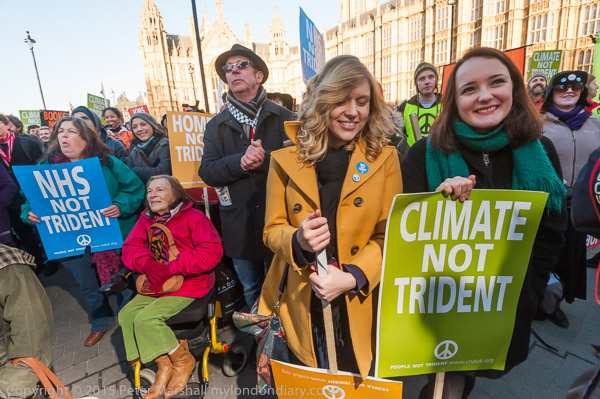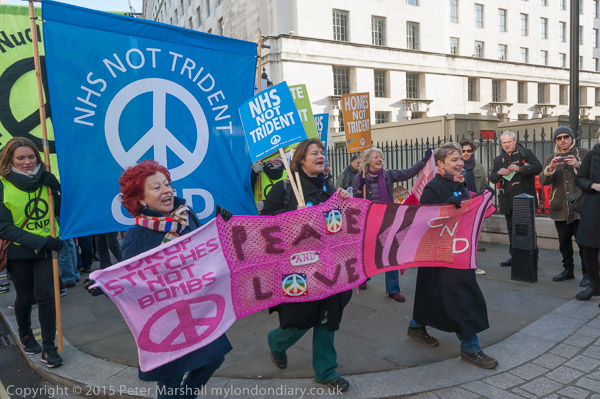
The start of the scarf passes in front of the MoD, held by Heather Wakefield of UNISON, Rebecca Johnson and CND Chair Kate Hudson
I don’t much like photographing the ‘big’ protests which attract a lot of media interest because things often get too crowded and too organised by stewards and police to make it possible to work as I like to do, and I was pleased to find that although CND’s ‘Scrap Trident’ protest was a decent size, it wasn’t like that at all. True, there were a lot of photographers present, but there weren’t any of the media scrums that make life unpleasant, and the stewards were helpful, doing their job and not getting in the way. Groups like ‘Stop the War‘ could learn a lot!
There were perhaps a couple of thousand protesters, though it wasn’t easy to count, as much of the time they were rather spread out, so it was a decent size for a protest. Perhaps surprising there were not more, since there are few people who aren’t politicians or have shares in companies who might benefit from spending huge amounts on weapons systems that will never be use who don’t feel that the huge sums of money involved in replacing the UK’s Trident missiles is a waste of money – that, as the placards at the protest said, would be better spent on Education, the NHS or, well, almost anything.
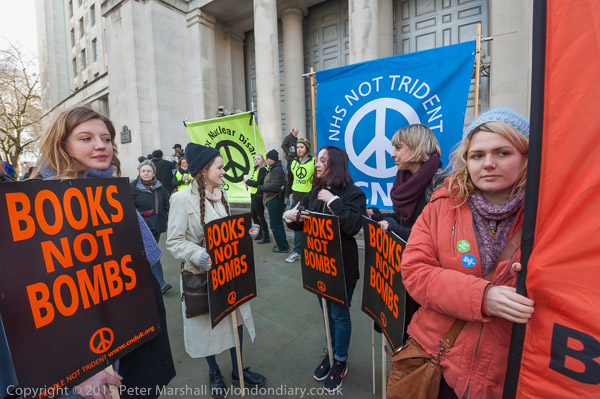
Our independent nuclear deterrent has for many years been fictional, a very minor part of the US nuclear deterrent; we maintain the fiction to keep the place in some interenational bodies as a ‘nuclear power’. Other countries which have nuclear weapons – like Israel – prefer to keep quiet about them, so haven’t got invited, and North Korea didn’t get an invite after testing one (perhaps because our intelligence services know it was one of three designed in Israel, assembled in South Africa, shipped to Oman in a covert UK goverment operation supervised by Dr David Kelly and then stolen by a Zimbabwean arms dealer who sold it on the black market – or am I just reading too many conspiracy theories?) Perhaps we should just spread some stories around about Trident having been given a new lease of life and use the money for something useful.
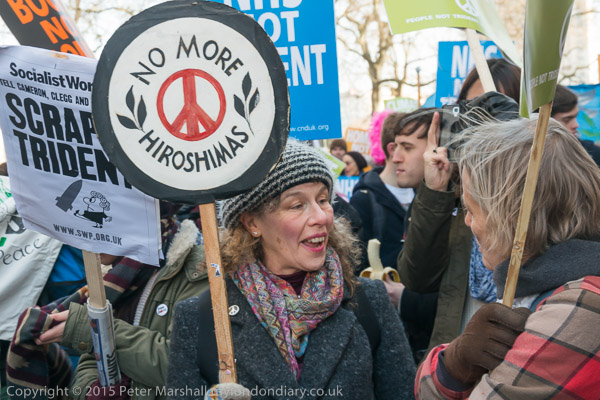
A woman with a vintage ‘No More Hiroshimas’ placard that her mother had carried to Aldermaston on the first march in 1958
Back to real life, the protest did raise some problems. How does one photograph a scarf wrapping around four sides of the block containing the Ministry of Defence, around 0.7 miles in length? The answer has to be in rather small lengths, as otherwise it just gets too small to see. But you also need a longer view to show it really is a long piece of knitting.
I’d previously photographed a much longer length of this knitted peace scarf, around ten times as long, stretched out between the UK’s two atomic bomb factories in the Berkshire countryside, Aldermaston and Burghfield. I’d gone on a bicycle and ridden along the length and back, taking pictures of the scarf being put into place, and then after it was joined up, run along beside part of it taking picutres for the 15 or 20 minutes that people held it up – and it had worked out quite well.
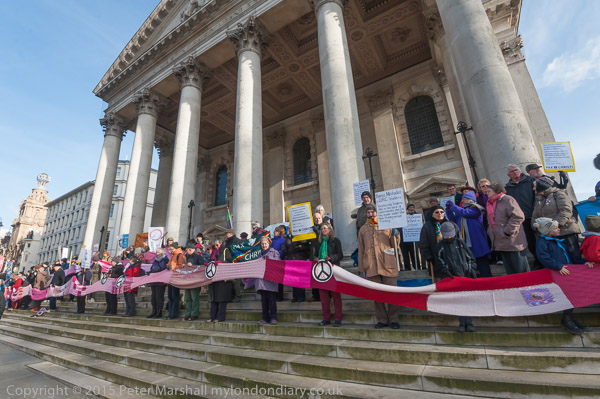
But this was different, with the scarf being carried around by the protesters walking around the block. I started by photographing people as they gathered for the protest, including a faith group who started from a service at St Martin’s in the Fields before marching down Whitehall with a shorter length of scarf to join the rest of the protesters. It wasn’t quite clear what time they would be leaving, so I’d asked my wife who was with them to phone me when they were coming out of the church. She did, but it was fairly noisy where I was photographing and I missed her call, but decided I would go up and take a look and arrived in time for a few pictures before they started off.
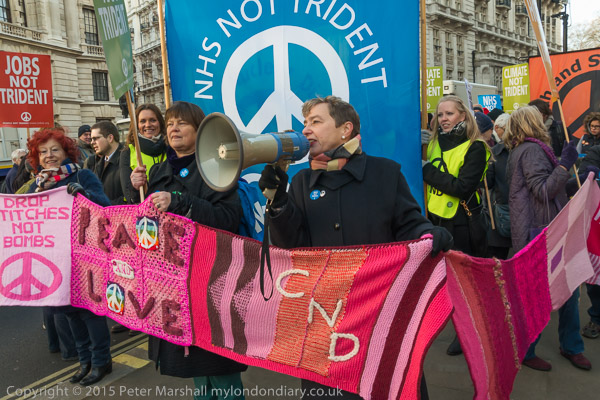
For the wrapping of the block, I started with the leaders at the front of the scarf, who walked together with several banners, setting off at a rate that the people joining up lengths of scarf behind them couldn’t catch up. Working at first fairly close to them so that I could show their faces and read the messages in the piece of knitting they had chosen to lead the event, as they passed the Ministry of Defence in Whitehall I drew back a little to get a more general view of the banners in front of the building.
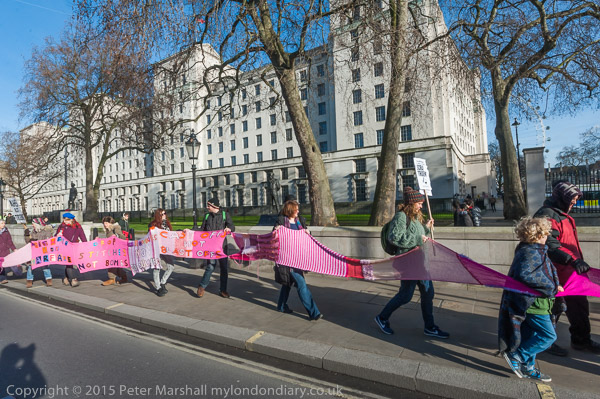
I stayed there to take more pictures as others went past, though it proved impossible to get a good clear view from a distance to show a really long line, as there were so many tourists and others walking along the pavement in front of the scarf. It wasn’t entirely satisfactory as you can see my shadow in every image. Then I ran in the direction the scarf was going, hoping to get some pictures including the Houses of Parliament – and particularly Big Ben – in the background. There were two problems here. Firstly because of the direction the scarf was being carried around, coming up Bridge St if I could see Big Ben I was looking at the backs of the heads of the protesters, which seldom makes for good pictures.
In the past I’ve sometimes managed to photograph people walking in this direction in front of Big Ben by working close to the corner where they turn into Victoria Embankment, working close to them and with a very wide angle. That didn’t work very well either, partly because most of the marchers were walking between me and the scarf and the scarf wasn’t very visible, partly because of the many tourists in a rather small space with the marchers, but mainly because the sun was shining directly into the camera lens.
I tried working in the realatively small area of shadow thrown by the tower of Big Ben, but still couldnt get what I wanted. I did manage to take a few pictures on or close to the corner with my back towards the Houses of Parliament, but by the time I’d moved a little down the street to where the Houses of Parliament were visible behind the scarf the sun was shining in my lens again.
I rushed on to photograph a part of the long line of marchers going past the long frontage of the Ministry of Defence on this site, managing to find a length of scarf with a decent number of people carrying placards as well as the scarf. When the scarf came to the Ministry it had turned around in the gardens in front and then gone back along the fence at the back of the gardens, just a few feet from the wall of the building so another long row, but less interesting and again the light was causing a little of a problem. Cloudy days often make life easier for photographers.
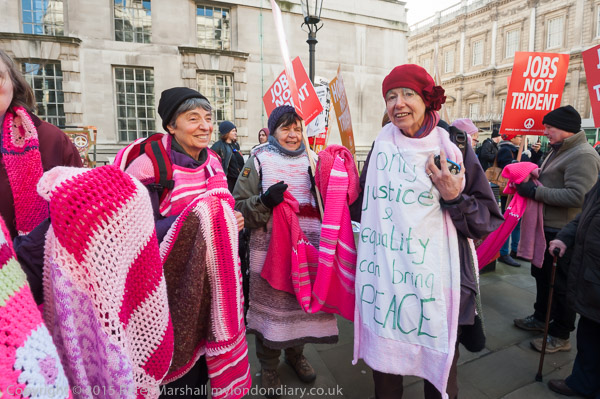
The front of the scarf had stopped where it started, just past the main entrance to the Ministry, and there was then a period of waiting for all those around the block to make their way around and come together again, and for most of the knitting to be rolled up again. Finally it was time to set up for the short march down Whitehall and past the front of the House of Commons to end up at Old Palace Yard for a rally.
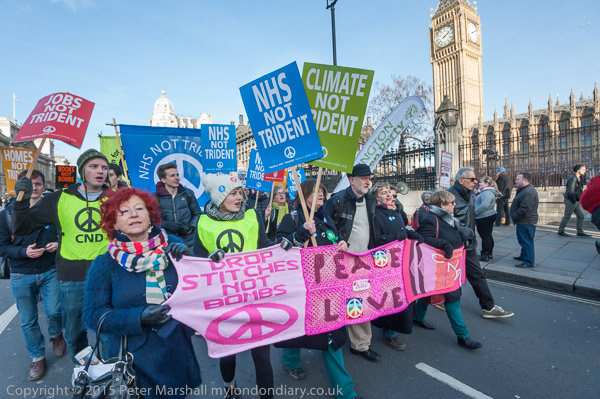
I did get a picture as they walked past Parliament with Big Ben to show it, though it wasn’t one of my better examples. You can see more pictures at ‘Wrap Up Trident’ surrounds Defence Ministry and Christian CND against Trident Replacement
Continue reading Wrapping up the MoD


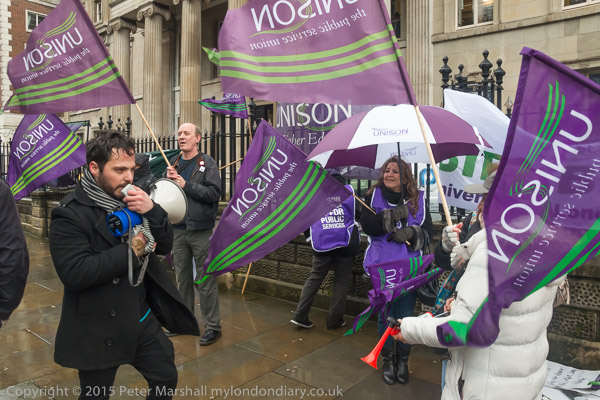
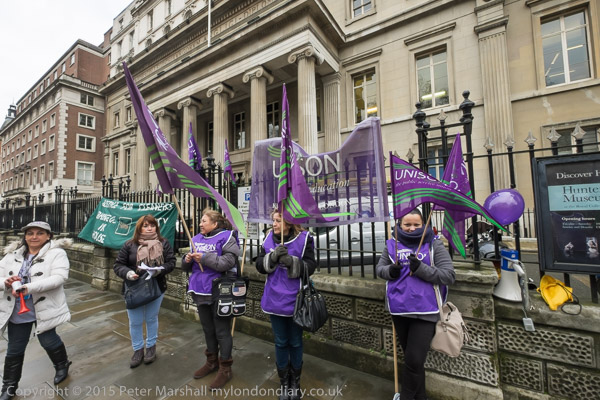
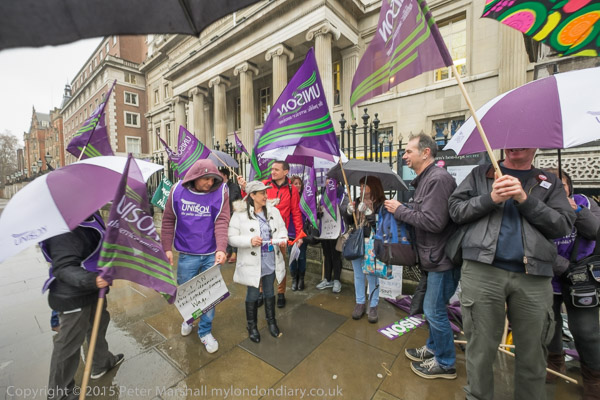
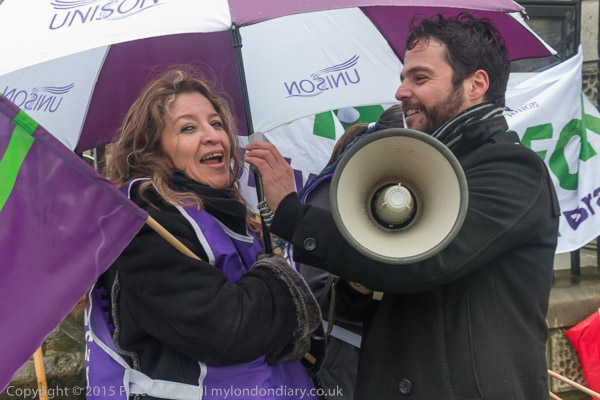
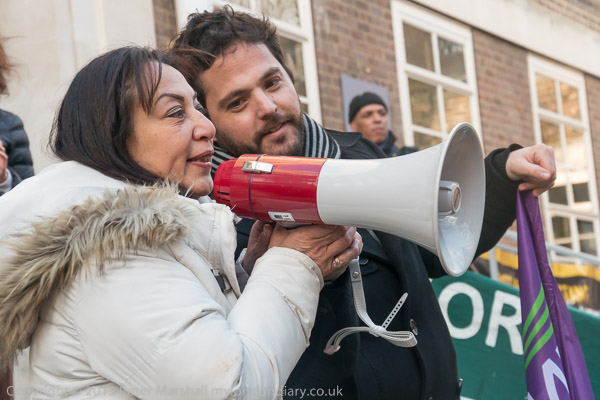
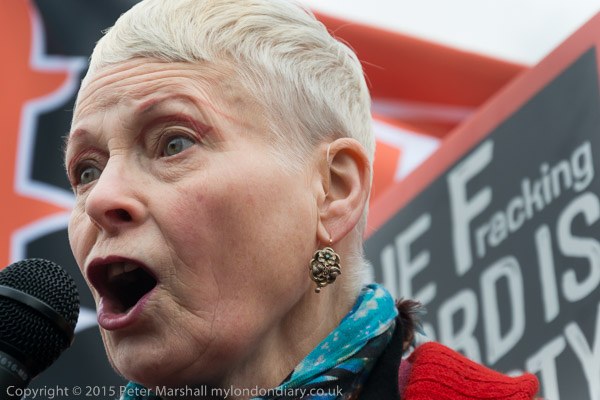
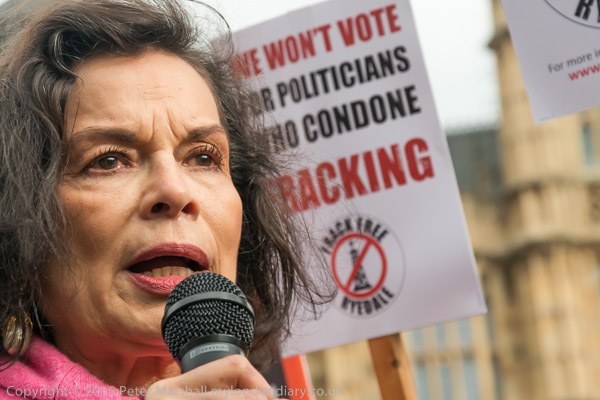
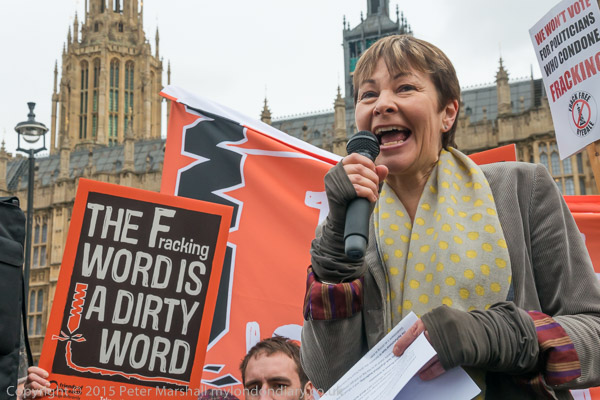
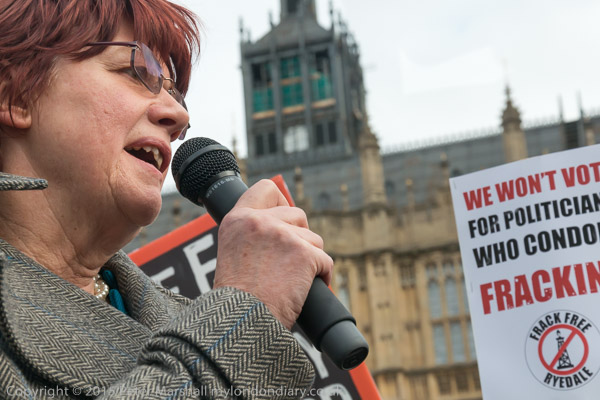
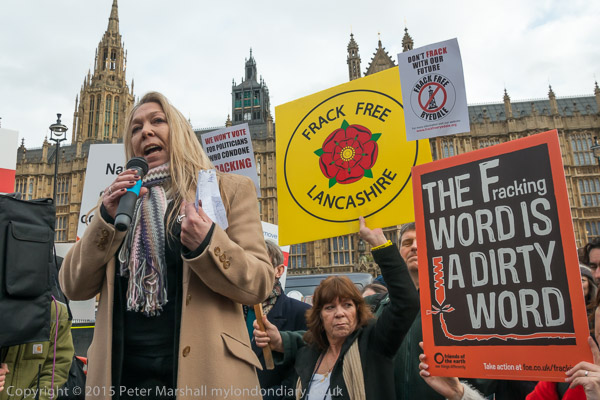
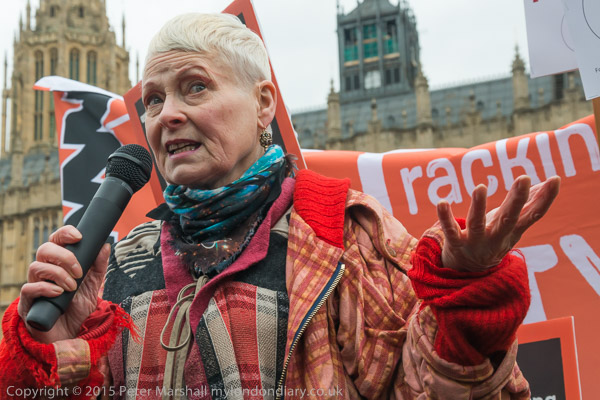 D800e, 18-105mm DX, 42mm (63mm)
D800e, 18-105mm DX, 42mm (63mm) 